|
BULBLOG 14 - 5th April 2006
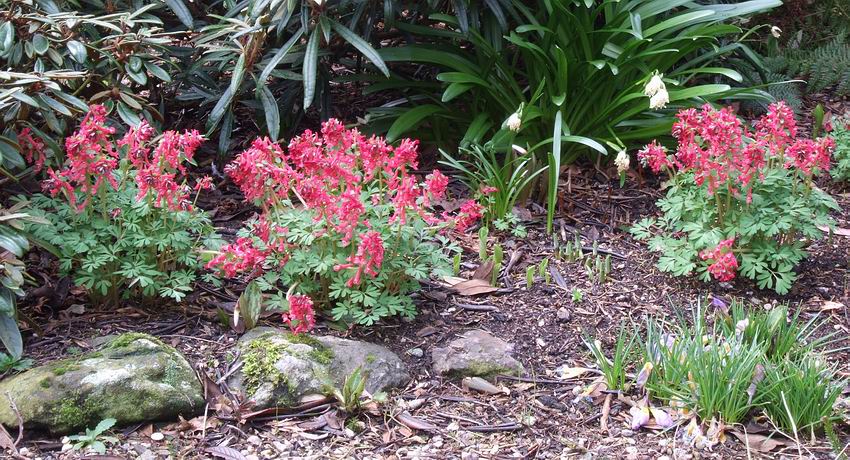
Corydalis Craigton red
What a difference a few days of warm sunshine make to the growth of the bulbs. Last week I compared the stage of growth on Corydalis Craigton Red between last year and this and now one week on it is in full glorious flower having been still in bud last week. I selected this form and named it for two reasons, firstly, it is the reddest Corydalis I have grown and secondly, it is very showy, holding its large flower spikes well clear of the foliage.
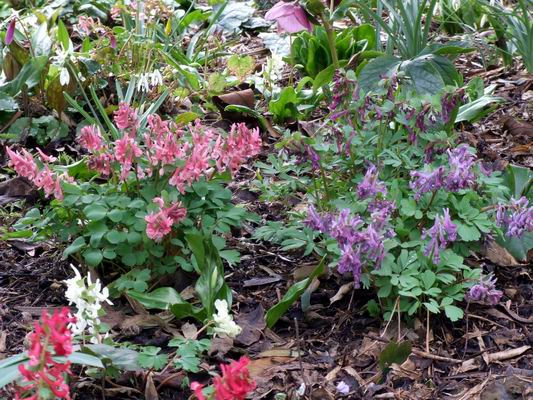
Corydalis in garden
We have lots of Corydalis solida seedlings all over the garden from white, through the muddy purples to pink and red and all are great garden plants; they come in to flower early and by mid May they have retreated back underground leaving the space for other bulbs to take over. I especially like it when I get mixed drifts of all the colours and so I plan to split some of these clumps this May and mix them around.
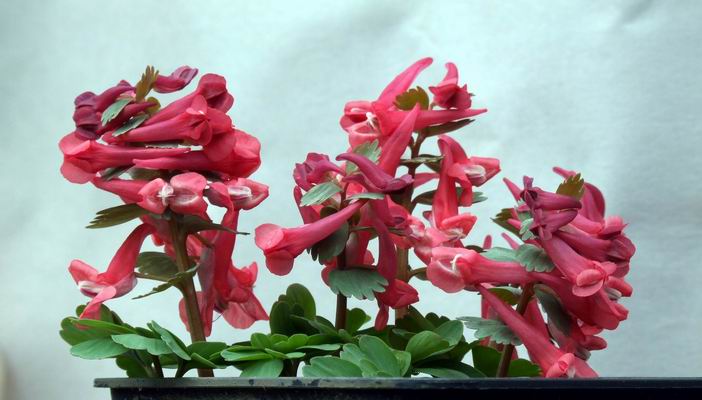
Corydalis red and compact
One seedling clump I noticed last year also had quite a good red colour but what added to its attraction was it stayed very short and compact. I lifted some of the tubers and grew them on in a pot to see if this compact habit was genetic or cultural. This picture shows that this is clearly a compact form and I will continue to trial it and may just end up naming it as well - what was I saying about Galanthophiles last week?
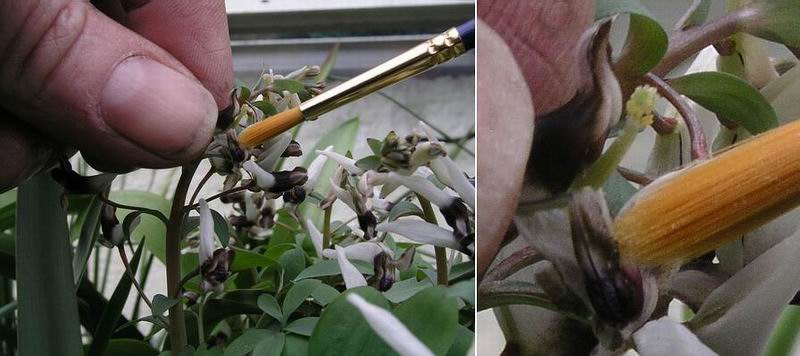
Pollinating corydalis
While we get some seed setting in the garden corydalis, it is never that prolific and when you grow them under glass some species will not produce any seed unless you fertilise them - there are no insects about this early apart from the odd foolhardy bumble bee who does not know how to fertilise the corydalis flowers. It is quite quick and easy to do the job yourself by holding the spur at the back of the flower and pulling the brush down across the lip. This will expose the anthers and stigma; the same action also transfers the pollen - this gives you a far greater chance of getting seed even from a single clone.
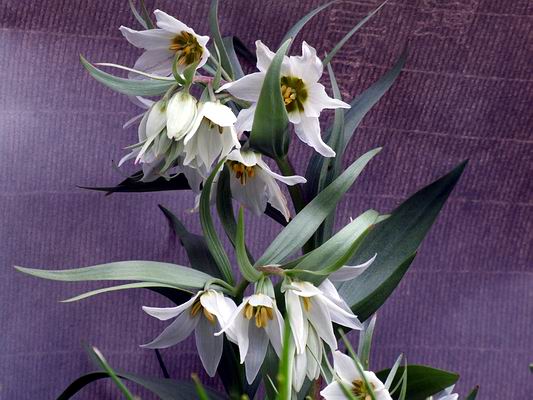
Fritillaria bucharica
Even though the temperature has dropped again, we had snow last night: frits are coming out daily as any sunshine sends the temperature in our small glasshouses up to the mid teens. Fritillaria bucharica from our own seed is looking beautiful, this is the larger form that comes through the ground then as the stem grows it bends and twists around until its flowers open, then it holds it self upright.
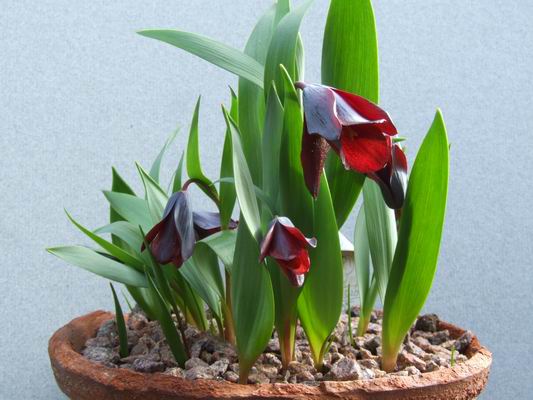
Fritillaria armena
One of many forms of Fritillaria armena that we grow and I have crossed them all with F. alburyana hoping for a cultivated form of the very beautiful hybrid between these two species. This is not a cross I would have thought of making if I had not seen the pictures taken in Turkey last year.
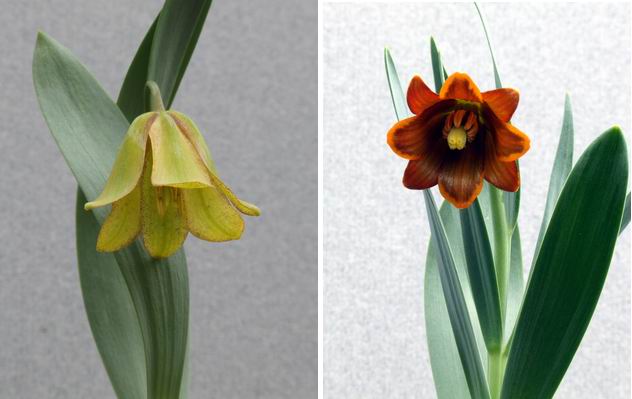
Fritillaria aurea x pinardii and pinardii
On the left is the first good flowering of another naturally occurring hybrid between Fritillaria aurea and pinardii. This is raised from seed that I received from Gothenburg so it is obviously a fertile hybrid. If it is fertile and all bulbs raised produce consistent looking flowers why is this not considered a new species? On the right is an unusual colour of Fritillaria pinardii; this time raised from Jim Archibald seed. As well as the very orangey colour you will notice that it has two extra petals and some extra stamens, this is most likely a freak occurrence and it will revert to the customary six next year.
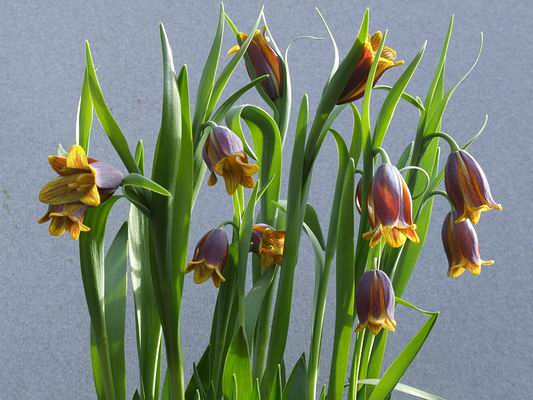
Fritillaria pinardii
Fritillaria pinardii is a very variable species and while I find it easy to identify in its typical form, as it drifts towards F. carica, I get very confused. It seems to me that we have apparently two species at each end but as we approach the middle ground it is virtually impossible to draw a defining line - is this just one polymorphic species? If I understood what Martin Rix was telling us at the Fritillaria Group Meeting the other weekend, the form above with the very yellow interior is F. alpinum. I wish Martin would get his book out so we could all share his great wisdom on fritillaria.
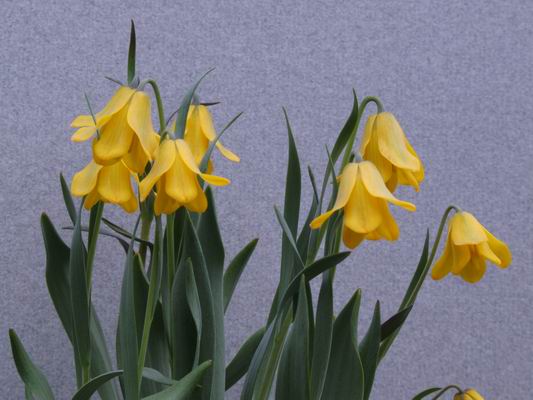
Fritillaria carica
This is Fritillaria carica in its distinct form which is easily identified: if only I could sort them all out as easily as I have around twenty forms.
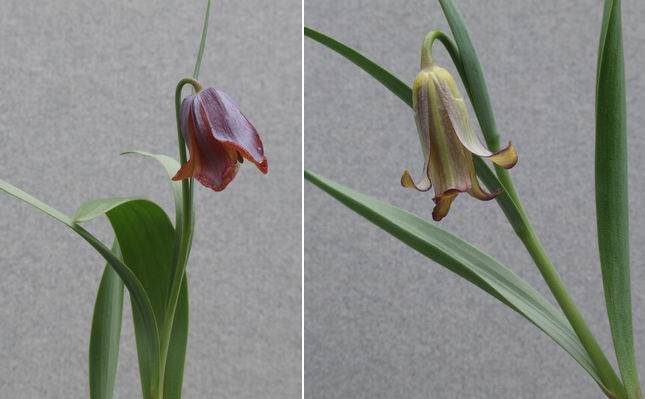
Fritillaria chlororhabdota and assyriaca
Two less common frits are the fairly newly named Fritillaria chlororhabdota (left) which in the absence of a good frit book I cannot tell you much about except it is nothing exciting or dramatic to look at. On the right is the true Fritillaria assyriaca not F. uva-vulpis which has been, and still is, being sold by the hundreds, wrongly labelled F. assyriaca.
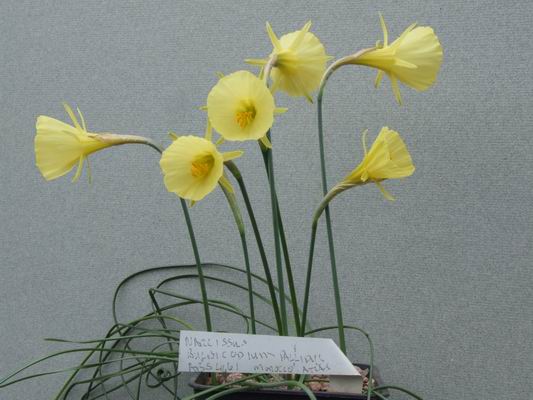
Narcissus bulbicodium pallidus
Looking suspiciously like a late flowering N. romieuxii this is Narcissus bulbicodium pallidus from Morocco. It is a lovely subspecies of bulbicodioum and when you compare it to romieuxii you can see the differences between the two.
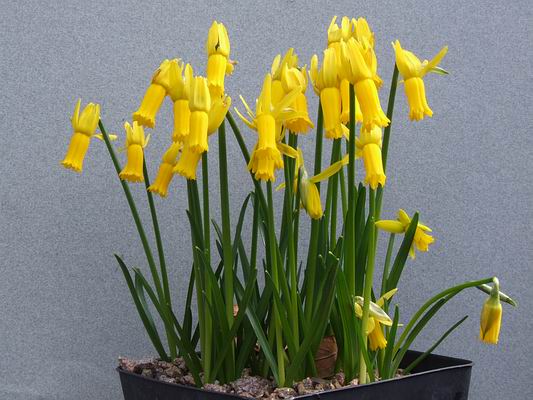
Narcissus cyclamineus
Despite the best efforts of the snow and frost Narcissus cyclamineus is still looking attractive. This is one of many pots of seedlings we have growing in outside frames without any covers. Seed is the only way to increase your stocks of Narcissus cyclamineus as it is very slow to form offsets. The very short ones to the right are unlikely to be miniatures this dwarfing is caused by the swinging weather stunting the growth of these few slightly later flowering forms.
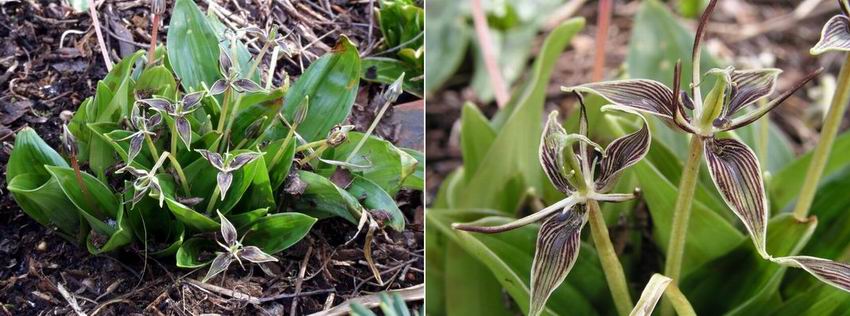
Scoliopus bigelowii
Also in full flower and worth close inspection is Scoliopus bigelowii with its lovely striped bracts. We have lots of this plant around the garden, all raised from seed, and we are rarely without out a flower form late December until early May.
^ back to the top ^
|

